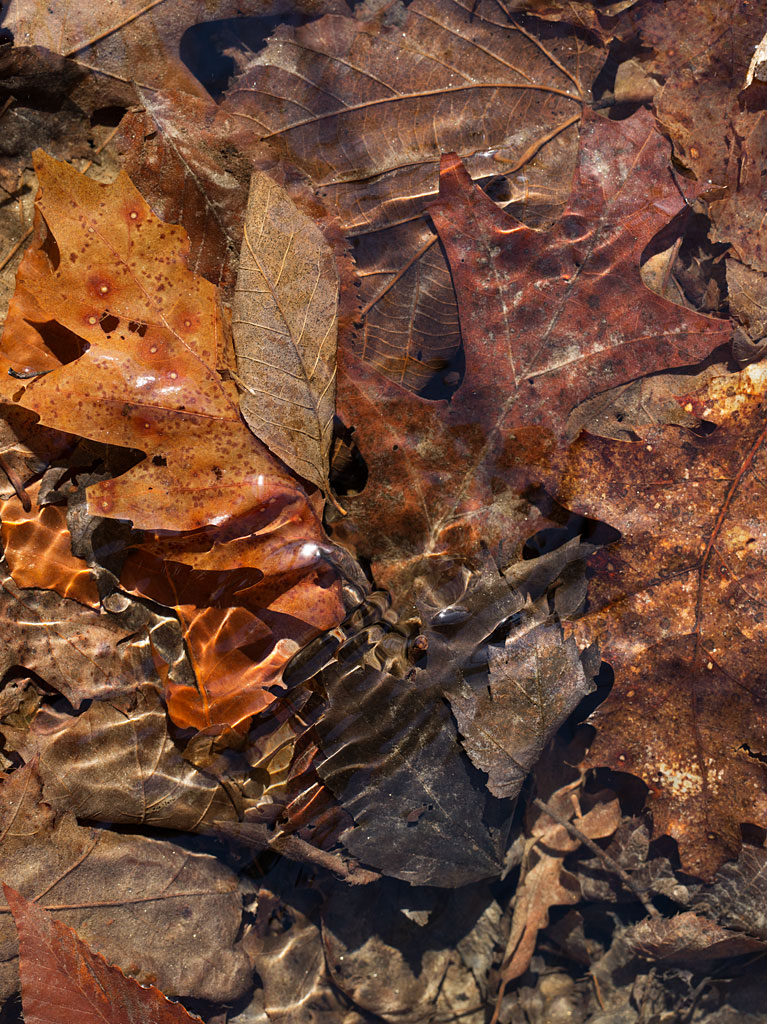 The forest floor is a layer of flat, matted leaves; it has none of the thick, plush quality of the fall. With the melting snow and spring rains, vernal pools and streams cover a large area of our understory. The water is clear as glass. Once the foliage returns, the pools and streams are soaked up by the trees. Click on the image for a larger view.
The forest floor is a layer of flat, matted leaves; it has none of the thick, plush quality of the fall. With the melting snow and spring rains, vernal pools and streams cover a large area of our understory. The water is clear as glass. Once the foliage returns, the pools and streams are soaked up by the trees. Click on the image for a larger view.
Monthly Archives: April 2014
Early Spring, Part 1
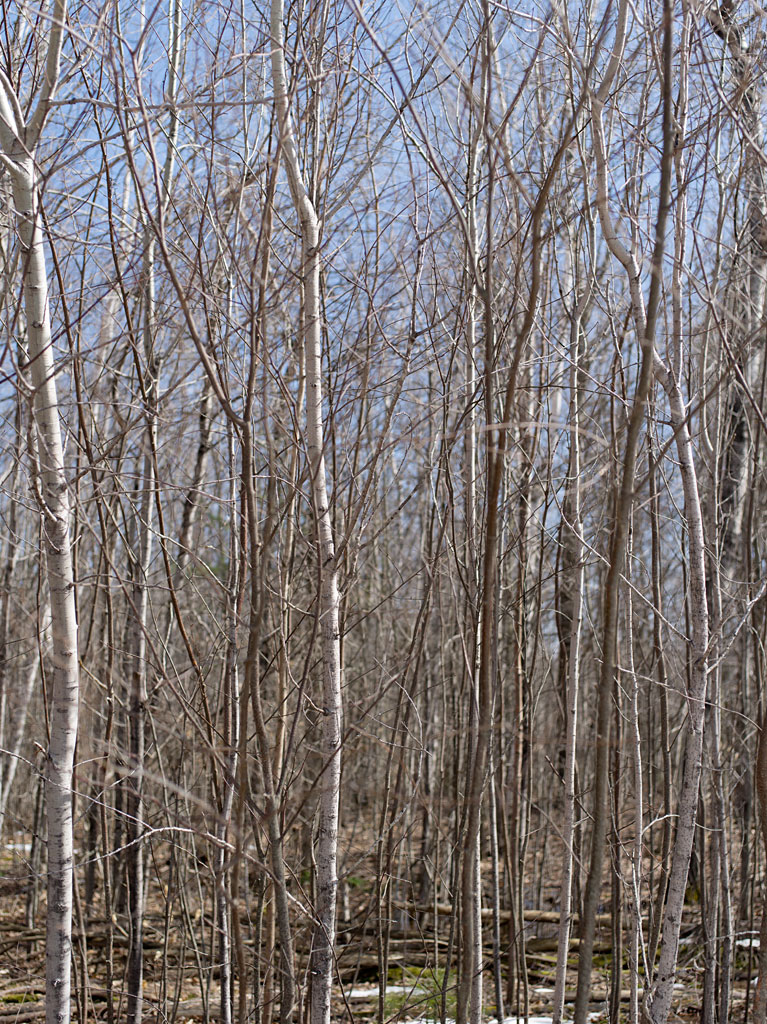 In April, heat and light come back to Maine. The forest is like an old man after a deep sleep, taking time to rise from the slumber. The humidity in the air gives a softness and transparency to the forest–light is much harsher in the dry winter air. We have a stand of saplings that are pioneering the open ground next to the forest. They are certainly happy to lose the weight of this winter’s ice storm. With their pliant wood and smooth bark, they seem to typify the spirit of spring. Click on the image for a larger view.
In April, heat and light come back to Maine. The forest is like an old man after a deep sleep, taking time to rise from the slumber. The humidity in the air gives a softness and transparency to the forest–light is much harsher in the dry winter air. We have a stand of saplings that are pioneering the open ground next to the forest. They are certainly happy to lose the weight of this winter’s ice storm. With their pliant wood and smooth bark, they seem to typify the spirit of spring. Click on the image for a larger view.
Maine Photography Show 2014
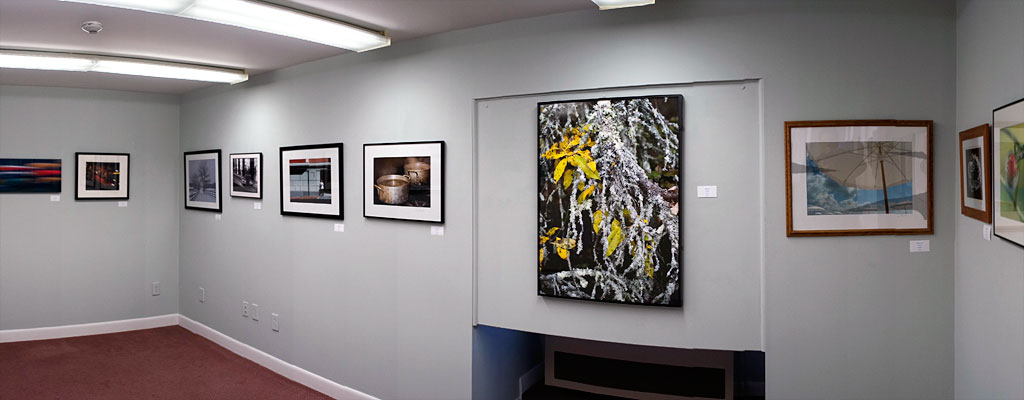 I had the good fortune to have one of my photographs selected for the Maine Photography Show. The show runs from April 12th to May 2nd at the Boothbay Region Arts Foundation gallery in Boothbay Harbor.
I had the good fortune to have one of my photographs selected for the Maine Photography Show. The show runs from April 12th to May 2nd at the Boothbay Region Arts Foundation gallery in Boothbay Harbor.
Passing Time, Part 3
Our Newfoundland Hikari
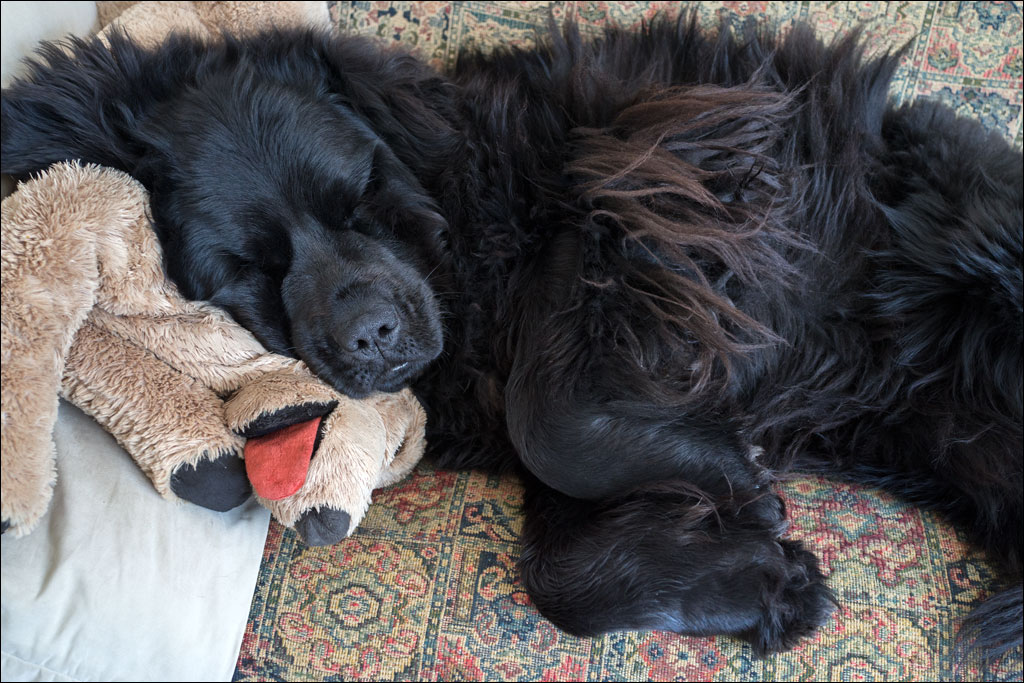 Hikari is our Newfoundland dog. She is only a 100lb/45kg—small for a Newfie. Her name Hikari (光) is the Japanese word for sunshine or light.
Hikari is our Newfoundland dog. She is only a 100lb/45kg—small for a Newfie. Her name Hikari (光) is the Japanese word for sunshine or light.
We are strict with our animals. Absolutely no dogs on the furniture. Except for the couch. And the bed. She has discovered that if she looks us in the eye and tilts her head to one side, she is more likely to get a treat. Newfoundlands are easily trained, almost as easy as their owners.
Newfies make great companions. Hikari is our second dog. Kai was our first. We rescued both of them. Newfies are not without their downside—drool on the kitchen ceiling is hard to clean and, if we could learn to spin their fur, we could have a second income. Click on the image for a larger view.
Bigelow Mountain and Preserve
 While Maine is most famous for its coastline, it is also home to some beautiful mountains. Bigelow Mountain is near the borders of northern New Hampshire and Canada. In 1976, the land was set aside as a preserve by the people of Maine. Bigelow is a 12 mile / 19 kilometer ridge that rises to 4,145ft / 1,260m and covers 33,000 acres / 133 km². The range is surrounded by Flagstaff Lake and Dead River to the north, west, and east, and Sugarloaf Mountain to the south. Click on the image for a larger view.
While Maine is most famous for its coastline, it is also home to some beautiful mountains. Bigelow Mountain is near the borders of northern New Hampshire and Canada. In 1976, the land was set aside as a preserve by the people of Maine. Bigelow is a 12 mile / 19 kilometer ridge that rises to 4,145ft / 1,260m and covers 33,000 acres / 133 km². The range is surrounded by Flagstaff Lake and Dead River to the north, west, and east, and Sugarloaf Mountain to the south. Click on the image for a larger view.
Old Man’s Beard—Usnea
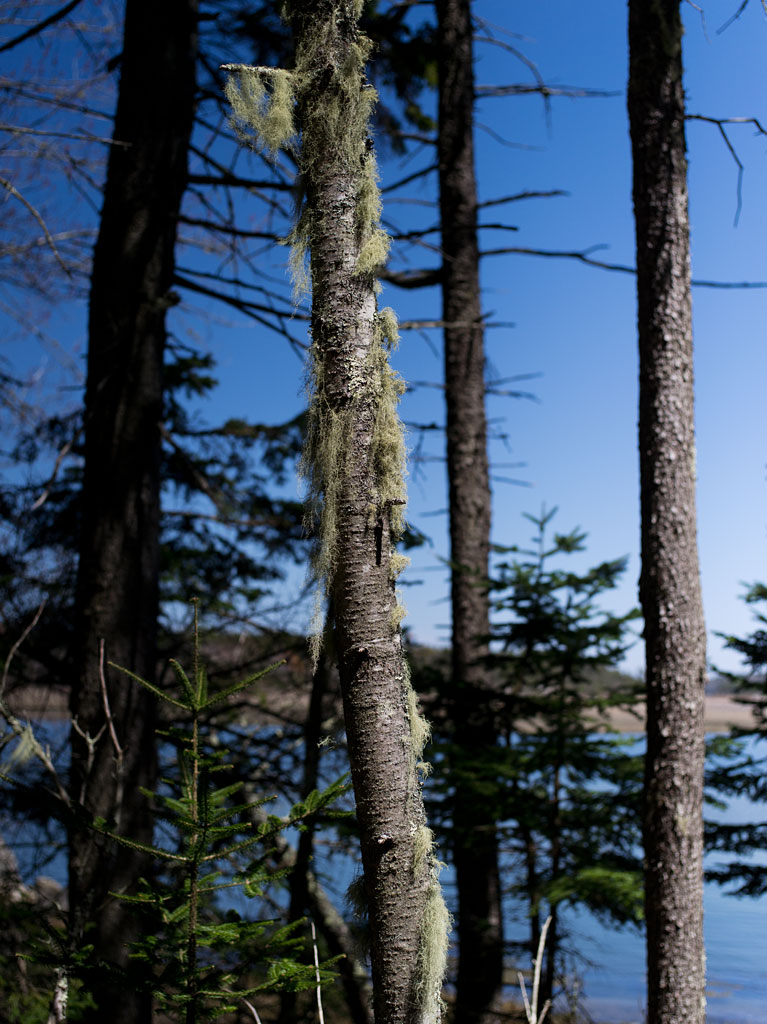 Usnea is a generic name for a rather broad group of lichen in the parmeliaceae family. Hanging from dying or sick trees like green cotton, it is mostly called by the common names of Old Man’s Beard or Beard Lichen. Although usnea indicates the symptoms, it is not the cause of the tree’s condition. Usnea is very sensitive to air pollution, especially sulfur dioxide, which can severely impede its growth.
Usnea is a generic name for a rather broad group of lichen in the parmeliaceae family. Hanging from dying or sick trees like green cotton, it is mostly called by the common names of Old Man’s Beard or Beard Lichen. Although usnea indicates the symptoms, it is not the cause of the tree’s condition. Usnea is very sensitive to air pollution, especially sulfur dioxide, which can severely impede its growth.
Usnea is believed to have antibiotic properties and was used like a sterile gauze for wounds. It is recommended to only use this plant externally. The lichen can also be used to create dyes for textiles, giving yellow, orange, green, blue, or purple hues. Click on the image for a larger view.
Spring at Marshall Point
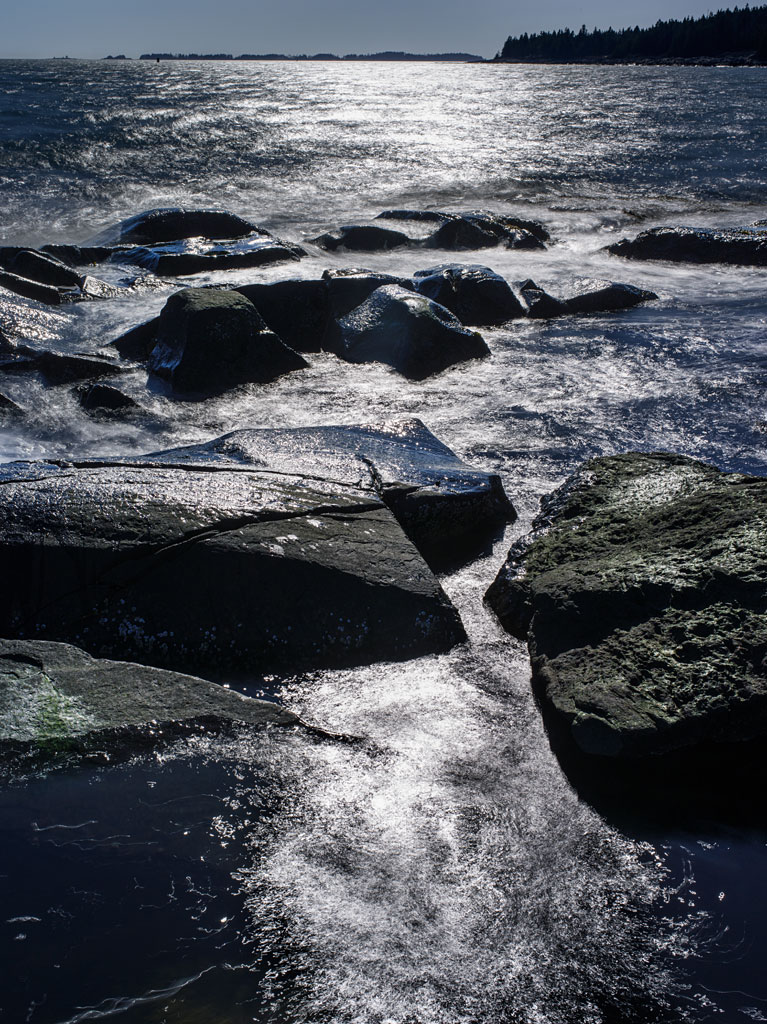 Spring has arrived. On Sunday, Naomi and I went out to Marshall Point at Port Clyde, Maine. The sky was cloudless and the world was filled with light–and heat; it was 52°F/11°C. While we still have snow on the ground at home, it has disappeared along the coast.
Spring has arrived. On Sunday, Naomi and I went out to Marshall Point at Port Clyde, Maine. The sky was cloudless and the world was filled with light–and heat; it was 52°F/11°C. While we still have snow on the ground at home, it has disappeared along the coast.
Marshall Point is the terminal of a peninsular that juts out into the Gulf of Maine on the western edge on Penobscot Bay. A string of islands continues beyond—Hupper Island and Thompson Island are on the horizon. The point is known for its lighthouse. Click on the image for a larger view.
Our Mourning Doves
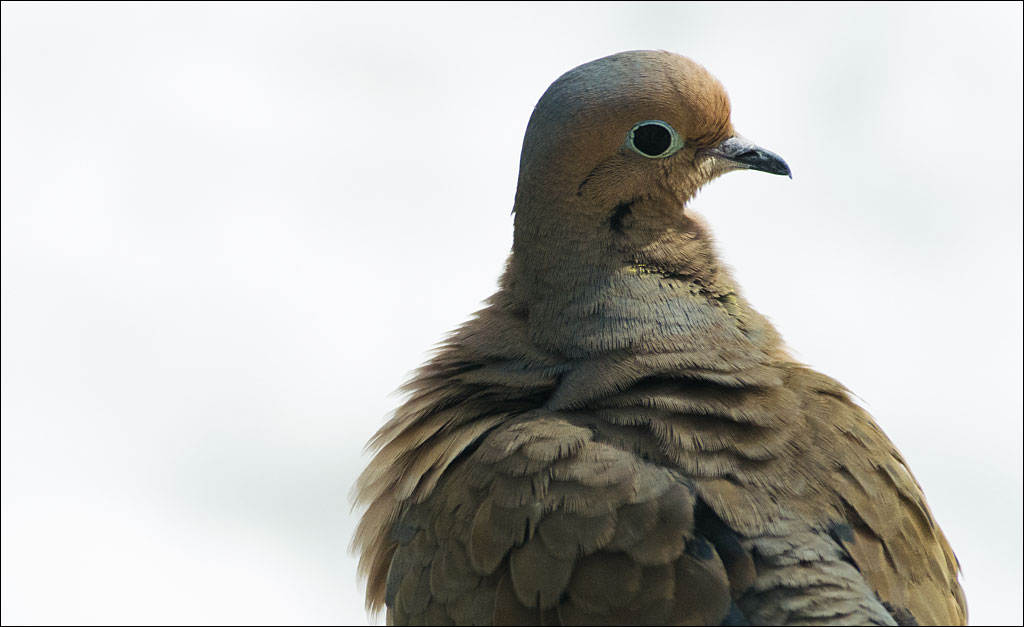 It has been a very long winter in Maine this year. The snow pack still covers our garden. The Mourning Doves, Zenaida macroura, have been sitting out on our deck whenever there is a glimpse of the sun.
It has been a very long winter in Maine this year. The snow pack still covers our garden. The Mourning Doves, Zenaida macroura, have been sitting out on our deck whenever there is a glimpse of the sun.
The dove gets its name from its deep plaintive call—actually, I find the call rather calming and peaceful, more of a purring than a wail. Like our Chickadees, the Mourning Doves spend the winter with us. It is a rather timid bird and forages cautiously under our feeders. Click on the image for a larger view.
Spring Salt Marsh
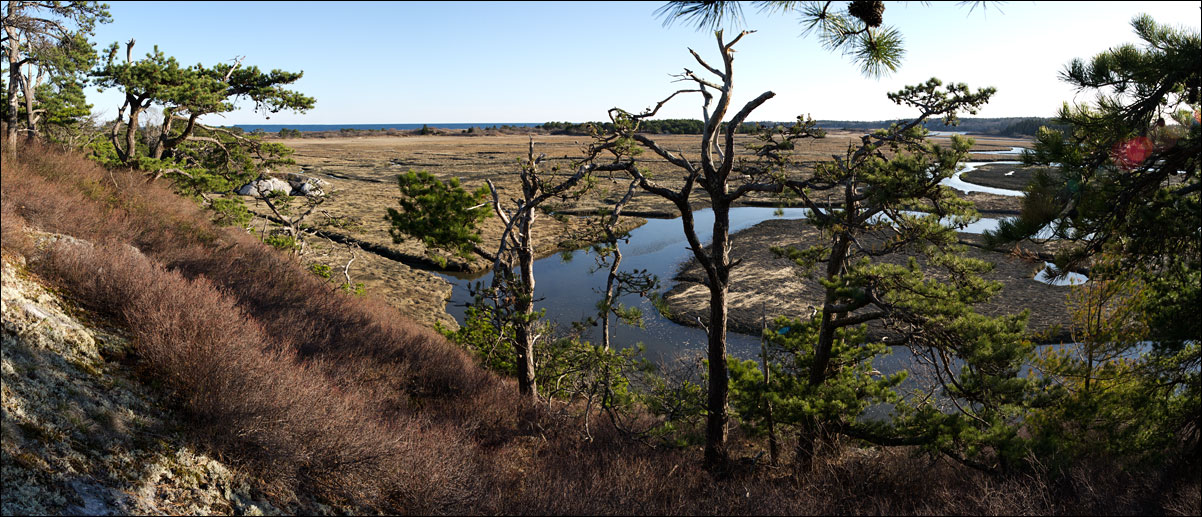 Winter eventually gives way to spring. The snow thaws, signaling the start of what is fondly referred to in Maine as mud season. The salt marsh at Bates-Morse Mountain Conservation Area is a tangle of flattened grass. There is not a burst of growth—the plants don’t seem to trust the threat of snow and frosts have gone, and they are right not to. But the air is scented with the season’s potential. Click on the image for a larger view.
Winter eventually gives way to spring. The snow thaws, signaling the start of what is fondly referred to in Maine as mud season. The salt marsh at Bates-Morse Mountain Conservation Area is a tangle of flattened grass. There is not a burst of growth—the plants don’t seem to trust the threat of snow and frosts have gone, and they are right not to. But the air is scented with the season’s potential. Click on the image for a larger view.

